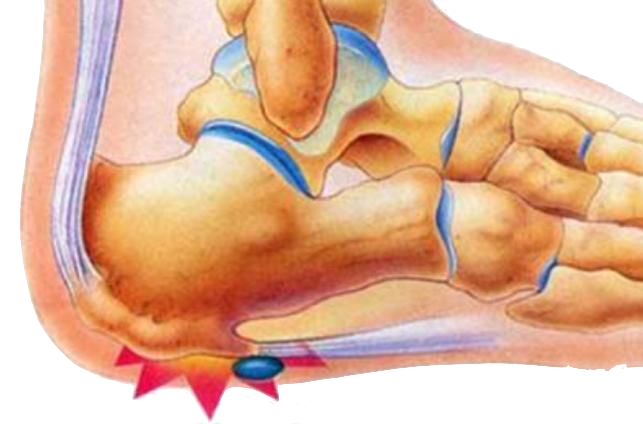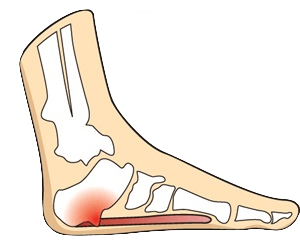Heel Spurs
What are Heel Spurs?
Heel Spurs are calcium deposits causing a bony protrusion on the underside of the heel bone (calcaneal bone spur).
These spurs are also linked to Plantar Fasciitis, an inflammation of the plantar fascia ligament. Heel Spurs commonly cause heel pain, but respond well to pain management.
Who Do Heel Spurs Affect?
Heel Spurs affect individuals who perform repeated stressful activities such as running, jogging, and athletes.
It is also more likely to occur in obese individuals, individuals with flat feet and women who wear high heeled shoes.
How Do Heel Spurs Occur?
Heel Spurs occur due to
- extensive repeated straining on foot muscles and ligaments,
- repeated tears in the membrane covering the heel bone, and
- stretching of the plantar fascia.
These stress injuries trigger calcium deposits to build up on the heel bone, resulting in the formation of a heel spur over time. Thus, Heel Spurs are a repetitive stress injury.
Causes Of Heel Spurs?
Heel Spurs occur due to build-up of calcium deposits on the bottom of the heel bone (calcaneal tuberosity). Risk factors for Heel Spurs development include:
- Constant heavy running and jumping, such as for athletes,
- Walking gait abnormalities,
- Obesity,
- Running or jogging on hard surfaces, and
- Flat feet or high arches.
Symptoms Of Heel Spurs?
The symptoms for Heel Spurs do not appear for months and even years.
However, if swelling occurs due to constant irritation of the plantar ligament at the site of the spur, the patient will experience chronic or intermittent pain This can be exacerbated with physical activity such as walking or running.
The pain is usually described as having a ‘sharp stabbing’ character.
Types of Heel Spurs
Heel Spurs can be classified based on their location:
- Inferior calcaneal spur: Located on the inferior aspect of the calcaneus bone
- Posterior calcaneal spur: Located at the insertion of the Achilles tendon
Stages of Heel Spurs
There are no stages of Heel Spurs, however, the pain gets worse with repeated activity without intervention in symptomatic cases.
How are Heel Spurs Diagnosed?
The diagnosis for Heel Spurs is made by taking a complete history and performing a complete physical examination.
Additionally, the doctor may employ one or more of the following imaging methods to determine the presence and location of the spur.
- X-Rays of foot in AP (dorsoplantar view), lateral and external oblique views, or
- Magnetic resonance Imaging (MRI) of the foot.
How are Heel Spurs Treated?
The main aim of treatment in Heel Spurs is improving quality of life by reducing pain. The treatment for Heel Spurs can be separated into two main approaches: Non-operative and Operative.
Non-Operative Treatment for Heel Spurs
Non-operative management is the first-line of treatment. Pain caused by Heel Spurs responds well to over the counter anti-inflammatory medicines (NSAIDs) such as Ibuprofen and Tylenol.
In cases of chronic pain, the doctor may recommend a conservative approach including stretching exercises, physical therapy, use of splints at night time and shoes that provide additional support to the foot. In some cases, a corticosteroid injection may become necessary to alleviate pain. The patient is also advised to warm up before strenuous activities and lose weight if they are overweight.
Surgery for Heel Spurs
If the non-operative management is unable to relieve the pain and swelling, surgery may be required which includes removal of the heel spur.
What If Heel Spurs Are Untreated?
If left untreated or improperly managed, Heel Spurs can result in reduced quality of life due to persistent pain and affect mobility.



